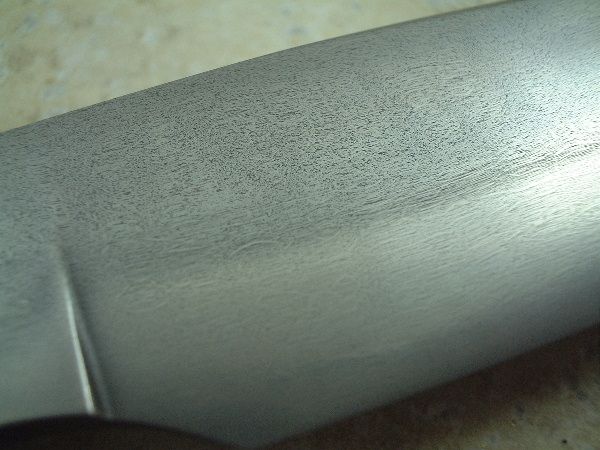Lately I've been forging blades from a great batch of roller bearings that respond well to the heat treating with very good edge performance, however, they have been really tough to hand finish, more so than normal to me. The reason for this topic is that there is a sort of "pattern" in the blade when I get to 320 grit and up. It's very light, you have to get the light just right. It looks like a damascus swirl grain pattern, but this is not damascus, and I've not done a light etch yet to see what, if anything happens. Anyway,I've taken a few pics that show what I'm talking about so if anyone has an Idea I'd be interested to hear.
https://www.flickr.com/photos/102871144@N07/sets/72157650068026133/
At the risk of making an assumption, you say you are using roller bearings, so this may very well be 52100.
What you see is a common result of forging this steel and often results in a sort of alloy banding that etches out like you describe.
Some camps actually seek this result.
If it is still performing within your expectations - enjoy it.
Karl B. Andersen
Journeyman Smith
Yep Karl I get that effect too on 5160, and thanks for the reply. Wes
I might suggest that you do a sub critical spherodization on the steel to get rid of the banding. As 52100 comes from the mill it typically a very coarse carbide structure (lots of big carbides forming at the grain boundaries). That banding is likely the result of this. Companies send steel out in this state because of fabrication needs (see: http://www.academia.edu/3840828/77240764_Bearing_Steel_52100). The finer the carbides in the steel, the less likely to find the grain structure shown in the picture. As probably said elsewhere, the finer the carbides the tougher the blade. I think it was Kevin who quite few years ago stated that those carbides are going to be somewhere and that somewhere is at the grain boundaries. Would you rather have very small ones or really big ones interfering with the grain boundaries? (not his exact words but close). I spherodize 52100 after normalization and prior to the heat cycle to produce martensite or bainite.
I should indicate that this structure can occur as a result of forging.
Dan


